![]() Latest work The "Caravan" performances Performances Arranged by Medium Sonja's c.v
Latest work The "Caravan" performances Performances Arranged by Medium Sonja's c.v
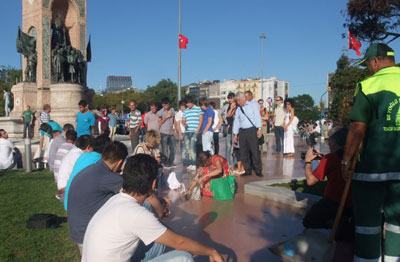
Photos: Sen McGlinn
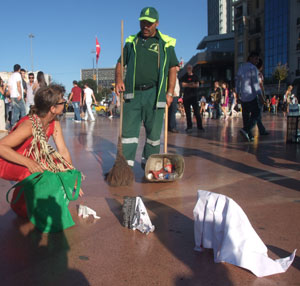
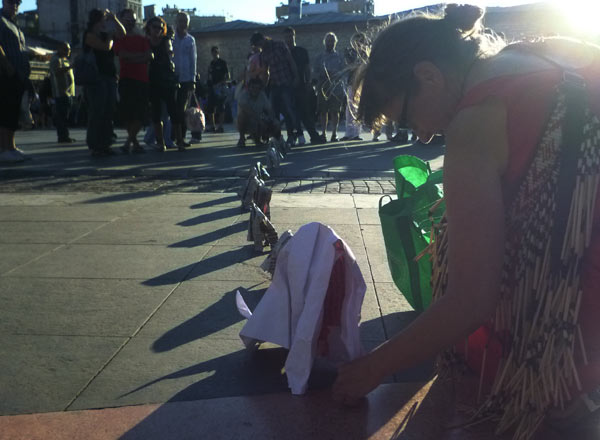
Photo: Maria Heidemann, The Netherlands.
We came to Istanbul to build a video installation for ISEA Istanbul in the Cumhuriyet Gallery (the Municipal Art Gallery) in Taksim Square. It was a long and eventful journey by road, via villages and chance encounters en route, from Leiden (The Netherlands) via another art project in Stockholm as well as via the Venice Biennale.
We were carrying part of our installation with us and we chose to make the journey on the road an art project in itself.
We collected newspapers in the diverse languages we encountered and Sonja made a caravan of origami elephants out of these. On September 11th Sonja led her caravan into Istanbul: she placed and replaced one elephant at a time, in a line extending from the centre of Taksim Square towards the Cumhuriyet Gallery.
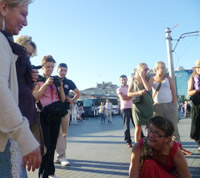
Photo: Maria Heidemann,
The Netherlands.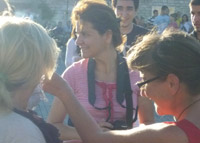
Photo: Maria Heidemann,
The Netherlands.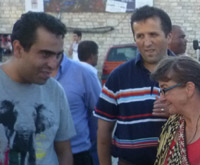
Photo: Maria Heidemann,
The Netherlands.
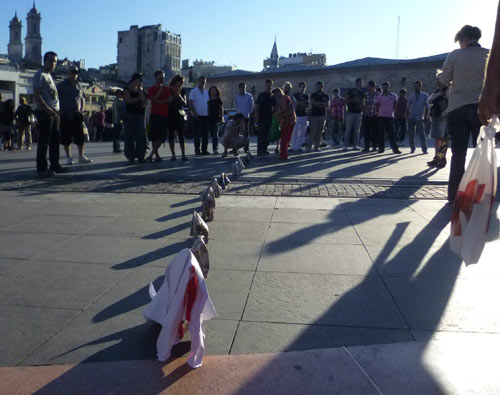
Photo: Maria Heidemann, The Netherlands.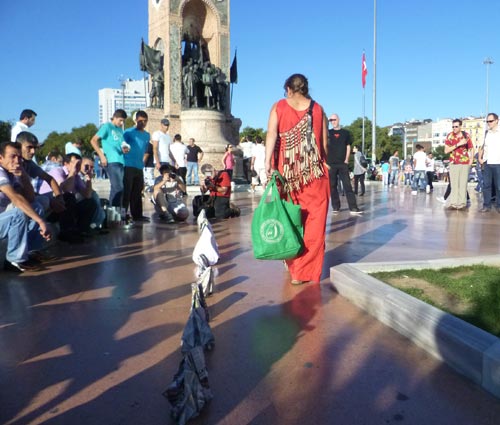
Photo: Maria Heidemann, The Netherlands.
In the manner of a light-hearted intervention, each elephant bearing Dutch, German, Danish, Swedish, Italian, Croatian, Bosnian, Serbia, Bulgarian or Turkish text was moved in turn to the head of the caravan. Meanwhile the public interacted by asking questions and making comments.
I continued to move the herd onward while aiming to keep people engaged in their own ways. I kept the discussion focussed on them telling me what they thought it was about. This was important because I was doing the out of the ordinary in an ordinary manner without framing this in a grand narrative, as a way of saying, "this too belongs in your world."
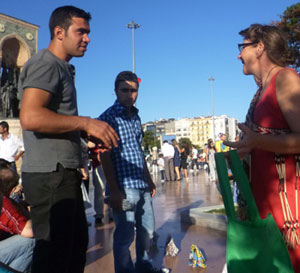
Photo: Maria Heidemann, The Netherlands. 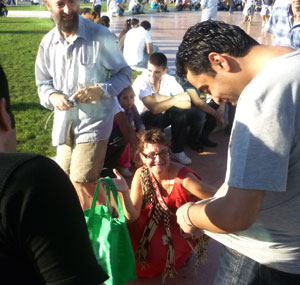
Photo: Maria Heidemann, The Netherlands. 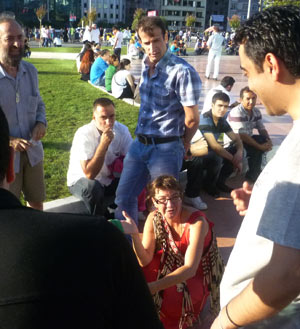
Photo: Maria Heidemann, The Netherlands. 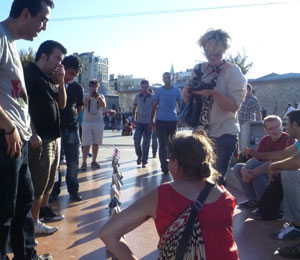
Photo: Maria Heidemann, The Netherlands. 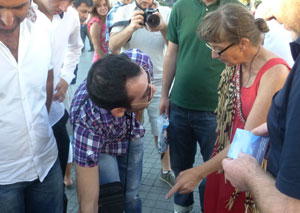
Photo: Maria Heidemann, The Netherlands. 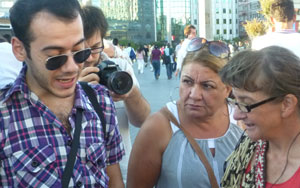
Photo: Maria Heidemann, The Netherlands. 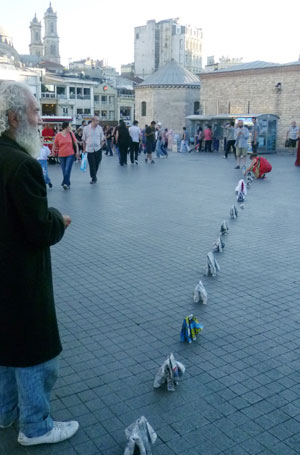
Photo: Maria Heidemann, The Netherlands.

Photo: Maria Heidemann, The Netherlands.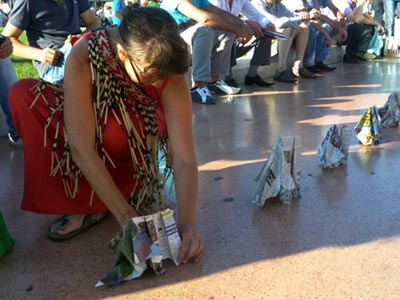
Photo: Maria Heidemann, The Netherlands. 
Photo: Maria Heidemann, The Netherlands.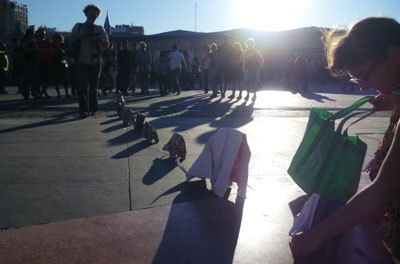
Photo: Maria Heidemann, The Netherlands.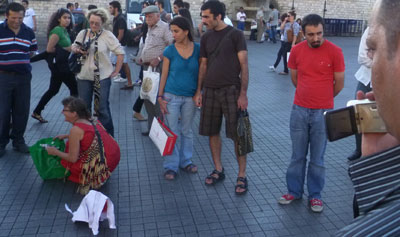
Photo: Maria Heidemann, The Netherlands.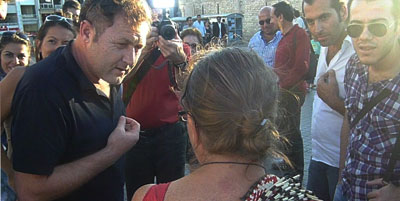
Photo: Maria Heidemann, The Netherlands.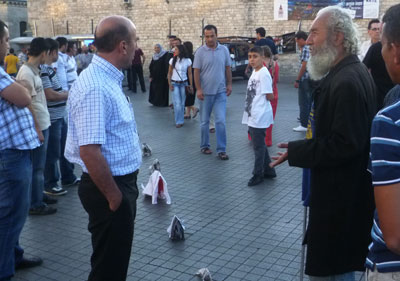
Photo: Maria Heidemann, The Netherlands.
Trade routes throughout history have been influenced by economical and physical retraints. Caravans stopped where there was trade. We stopped where there was art - a sculpture park in northern Germany, an art project on the Baltic, museums in Munich, the Venice Biennale and finally ISEA Istanbul and in between we stopped to sleep - in alpine villages, beside a lake in Croatia, or in villages near border crossings...
Even with the Euro and the dominance of English in Europe, what connects people in particular on a daily basis is news in their own language, so this caravan of elephants reflects information and news from the local. The work could be seen as a universal symbol for a caravan, created out of specifics, elephants from particular locations, news or information from a particular time slot. The global here is the presence of local particularities within a collective caravan. I chose the date September 11th for a similar reason: globally it is seen as a date of a great tragedy, here I am using this date (a decade after the event) for a poetic intervention which foregrounds cultural visibility with global undertones.
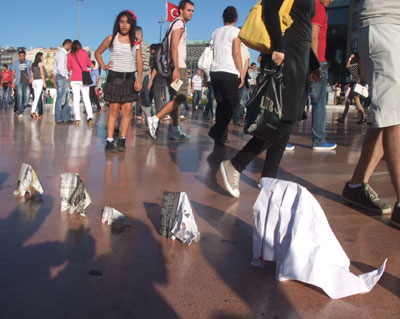
Photo: Sen McGlinn, The Netherlands. 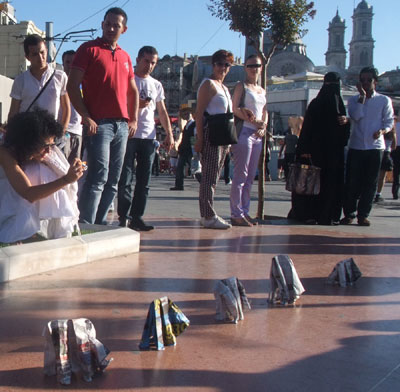
Photo: Sen McGlinn, The Netherlands.
The location of this work, Taksim Square, is used for protests on an almost daily basis, and during this performance there was a protest about 100 metres beyond me where I saw banners in relation to peace. This was a nice fortuitous touch. The protest looked like a gathering of the committed which the public tended to walk around. My performance drew passersby in—the crowd had diffuse edges with people arriving and leaving. A protest concerns taking a stance or making a clear statement. For my work, as participating public, you needed to ask yourself, what is this?
It is easier to engage people through their curiosity than through obvious committment.
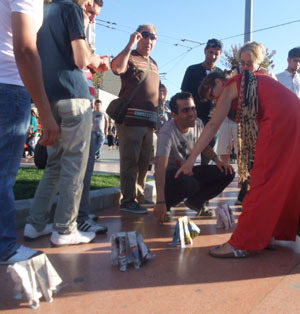
Photo: Sen McGlinn, The Netherlands.
Some asked questions, some listened, and some took action such as translating for others or rescuing elephants from some street dogs.
Keeping aspects of the performance, such as the vulnerability of the elephants, open gave the public room to act. The police came by a few times in vehicles and they could have chosen to run over the elephants but they turned around and took another route. And at the tram crossing, there was the risk that an elephant might have been run over before I moved it.
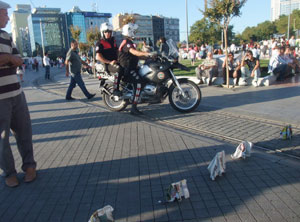
Photo: Sen McGlinn, The Netherlands.

Photo: Maria Heidemann, The Netherlands.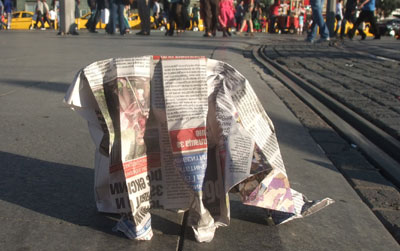
Photo: Sen McGlinn, The Netherlands. 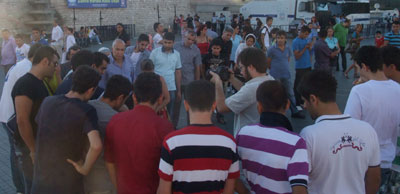
Photo: Sen McGlinn, The Netherlands.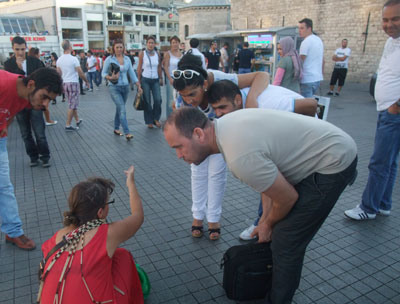
Photo: Sen McGlinn, The Netherlands.
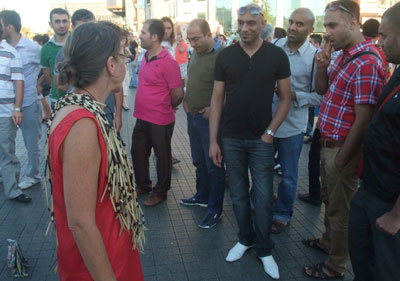
Photo: Sen McGlinn, The Netherlands.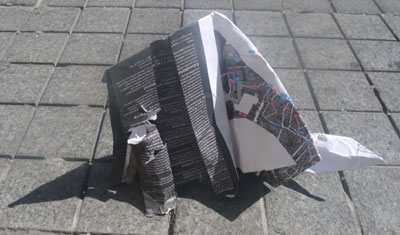
One of the elephants rescued from the dogs.
The performance ended before I reached the gallery entrance because the police said that a march was scheduled to start and my elephants would be trampled, and that I had to move them. They invited me to put them back afterwards, explaining that I was very welcome to return and to continue. I was touched by this concern and it reminded me of how art can work on so many levels.
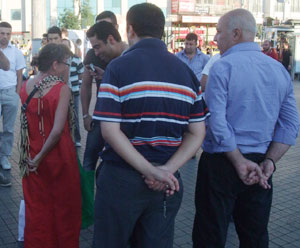
Photo: Sen McGlinn, The Netherlands. 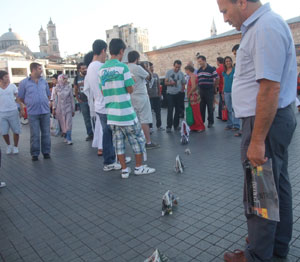
Photo: Sen McGlinn, The Netherlands. 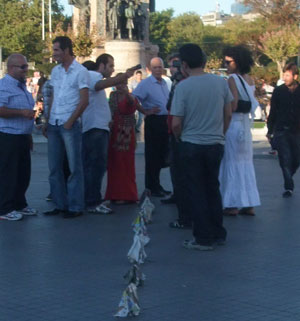
Photo: Sen McGlinn, The Netherlands. 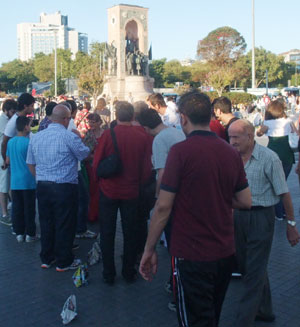
Photo: Sen McGlinn, The Netherlands.
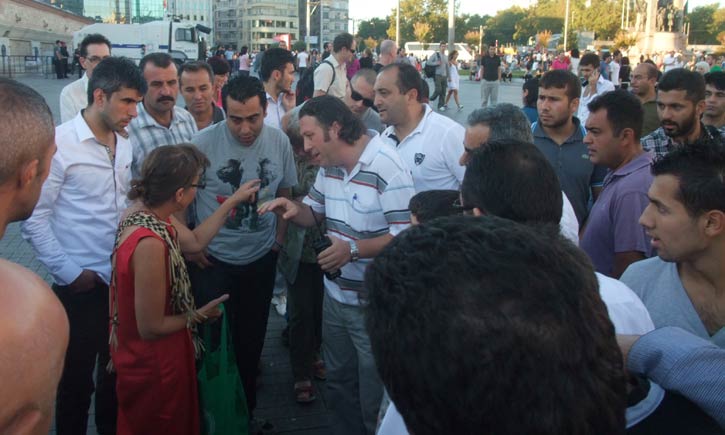
Speaking with a policeman about 10 minutes before the performance ended. Photo: Sen McGlinn, The Netherlands.
He was warning me about a protest planned to start that might trample my elephants but first it took a lot of discussion before I understood him and for him also to understand what it was that I was doing. It took some time to explain that this was about the poetic - a bridge between art and politics. He took pains to explain that after the protest I was most welcome to return and to finish taking the elephants over towards the art gallery.